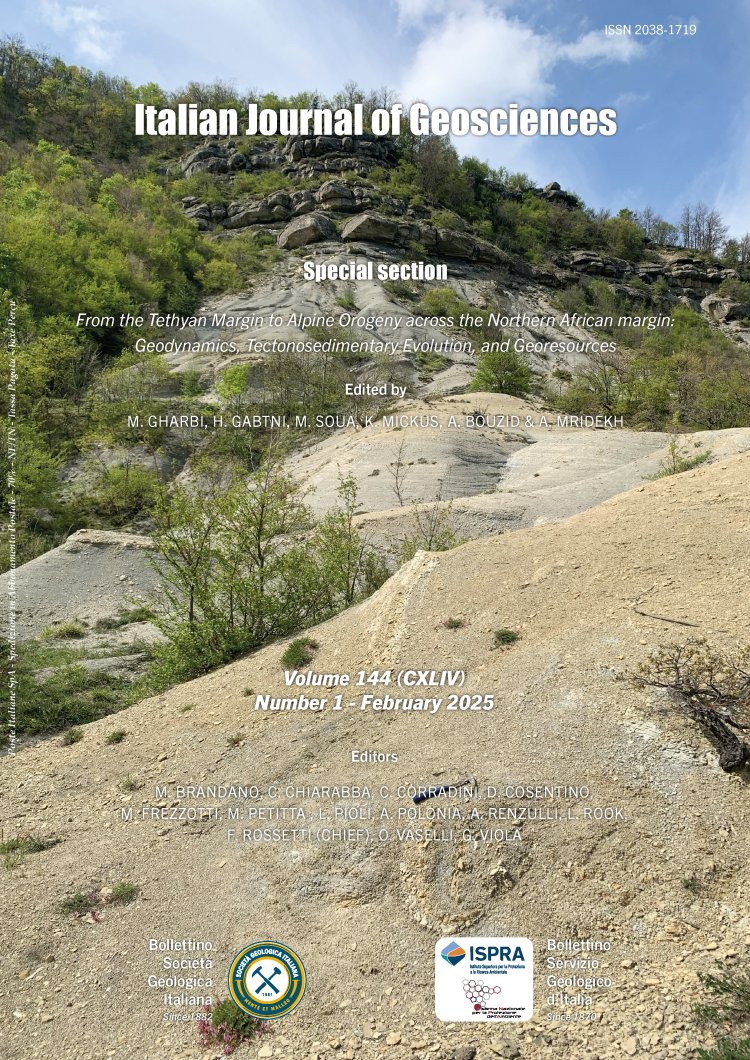
Depositional history of middle Miocene intrabasinal highs in the marnoso-arenacea foredeep (Tuscan-Romagna Apennines, Italy)
Stefano Conti1, Alessio Mainini1, Paolo Serventi1 & Daniela Fontana1
1Dipartimento di Scienze Chimiche e Geologiche, Via Giuseppe Campi 103, 41125, Modena (Italy).
Corresponding author e-mail: stefano.conti@unimore.it
Volume: 144 (2025) f.1
Pages: 121-136
Abstract
During the middle Miocene, the topographic relief associated with the formation of structural highs in the foredeep led to the sedimentation of draped marls with interbedded thin-bedded turbidites as pelitic key levels within the marnoso-arenacea fm. In this work we report a detailed mapping and stratigraphy of three fine-grained horizons (Langhian and late Serravallian in age) and distinguish two main types of synsedimentary deformative features, with a different origin. Extraformational argillaceous bodies, originated by submarine landslides are present in some portions of the horizons but a more complex origin is proposed for the formation and synsedimentary deformation of fine-grained deposits. The coherent distribution of the facies within the fine-grained deposits, with a recurrent stratigraphy recognizable in the three examined horizons, the conformity with the marnoso-arenacea enclosing turbidites and the occurrence of fluid expulsion processes marked by seep-carbonates, suggest that instability structures are related to the development of the high, articulated in depressions and axial culminations, with slumps restricted to the slopes of the growing structure. An evolutive model is proposed, with a coherent reconstruction of relationships between intraformational and extraformational bodies within the pelitic horizons.
Keywords
Get Full Text